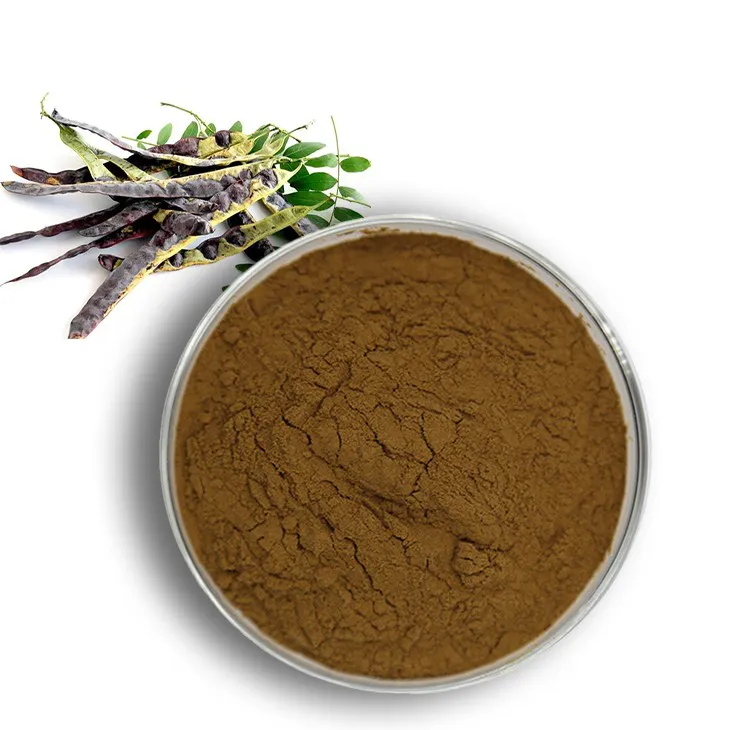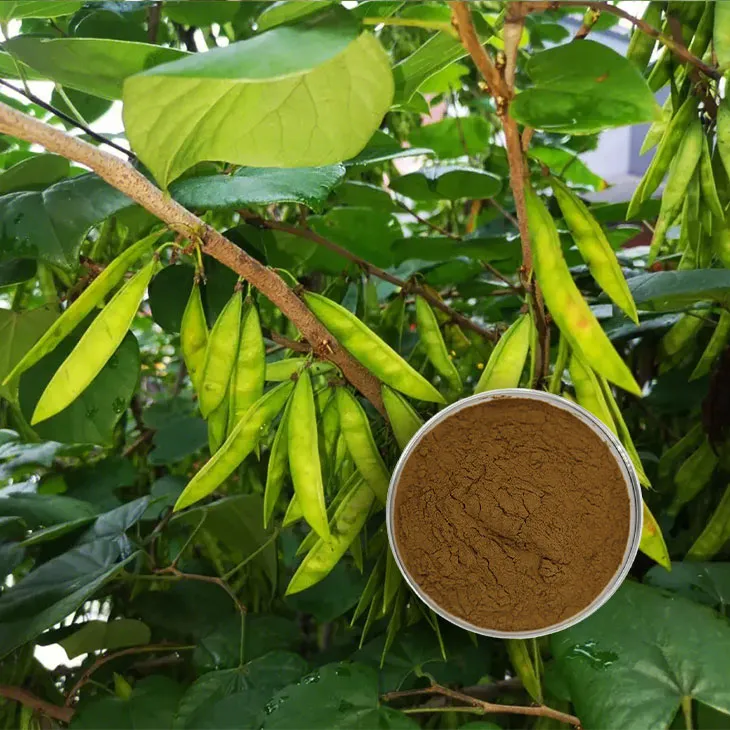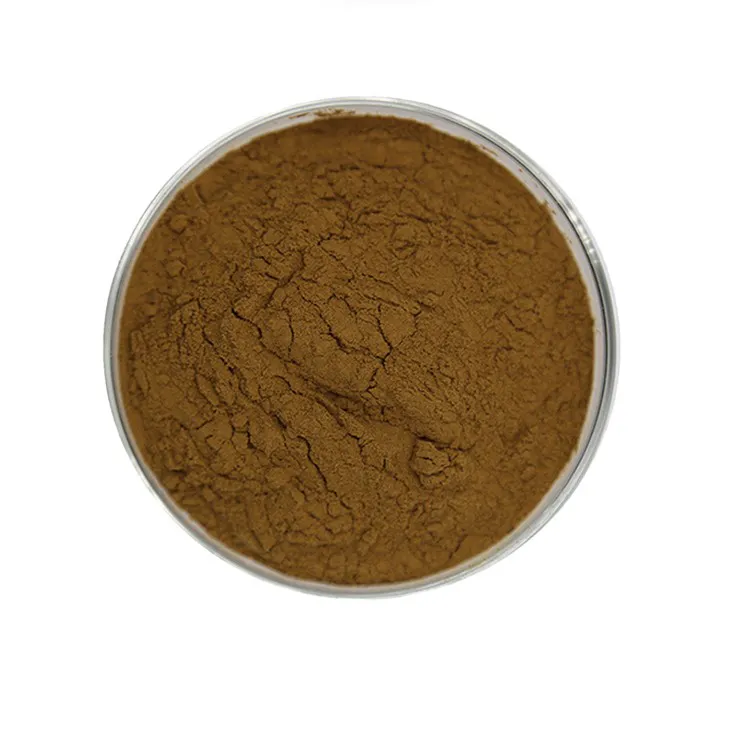- 0086-571-85302990
- sales@greenskybio.com
"The Healing Power Unveiled: Health Benefits of Saponin Extract
2024-07-03

Introduction
Saponin Extract has long been an area of interest in the field of natural health remedies. This extract, derived from various plants, contains a diverse range of saponins, which are glycosides with a steroid or triterpenoid structure. These unique chemical compounds are what give Saponin Extract its potential health - enhancing properties. The health benefits of Saponin Extract are a hidden treasure waiting to be fully explored, and this article aims to shed light on some of the most promising aspects of its use for health promotion.

Blood Sugar Modulation
One of the significant health benefits of saponin extract is its role in modulating blood sugar levels. For individuals concerned about diabetes or metabolic health, this natural approach could potentially be a valuable addition to their health management regimen.
Mechanisms of Action
Saponin extract may work in multiple ways to influence blood sugar. It has been proposed that saponins can affect the absorption of carbohydrates in the digestive tract. By interfering with the enzymes responsible for breaking down complex carbohydrates into simple sugars, saponin extract may slow down the rate of glucose entry into the bloodstream. For example, some studies have shown that saponins can bind to the surface of intestinal cells, creating a physical barrier that reduces the accessibility of carbohydrate - digesting enzymes.
Additionally, saponin extract may also have an impact on insulin sensitivity. Insulin is the hormone responsible for regulating blood sugar by facilitating the uptake of glucose into cells. Research suggests that saponins might enhance the action of insulin, allowing cells to more effectively take up glucose from the blood. This could be beneficial for those with insulin resistance, a condition often associated with type 2 diabetes.
Evidence from Studies
Several studies have been conducted to investigate the effects of saponin extract on blood sugar. In animal studies, rodents fed a diet supplemented with saponin - rich extracts have shown improved blood sugar control compared to those on a standard diet. For instance, in a study on diabetic rats, the group receiving saponin extract exhibited lower fasting blood glucose levels over a period of several weeks.
While human studies are still in the relatively early stages, there have been some promising findings. A small - scale clinical trial involving individuals with pre - diabetes showed that those taking a saponin - based supplement had a slight but significant reduction in post - meal blood sugar spikes. However, more extensive research with larger sample sizes is needed to fully confirm these effects and to understand the optimal dosage and long - term safety of using saponin extract for blood sugar management.

Anti - Cancer Properties
The anti - cancer properties of saponin extract are currently a topic of intense research, with early studies suggesting that it may play a role in preventing or inhibiting the growth of cancer cells.
Cellular and Molecular Mechanisms
At the cellular level, saponin extract has been shown to induce apoptosis, or programmed cell death, in cancer cells. Apoptosis is a natural process by which the body eliminates damaged or abnormal cells. Saponins can activate certain intracellular signaling pathways that lead to the activation of caspases, which are enzymes responsible for carrying out the apoptotic process. For example, in cancer cell lines such as breast cancer and leukemia cells, saponin treatment has been observed to increase the expression of apoptotic - related genes and proteins.
Another mechanism through which saponin extract may exert its anti - cancer effects is by inhibiting angiogenesis. Angiogenesis is the process by which new blood vessels are formed. Cancer cells rely on the formation of new blood vessels to supply them with nutrients and oxygen for their growth and spread. Saponins can interfere with the growth factors and signaling molecules involved in angiogenesis, thereby starving cancer cells and preventing their further proliferation.
Research Findings
In vitro studies, which are experiments conducted in test tubes or cell cultures, have provided a wealth of evidence regarding the anti - cancer potential of saponin extract. These studies have demonstrated the ability of saponin - rich extracts to inhibit the growth and viability of a wide range of cancer cell types, including prostate, lung, and colon cancer cells.
However, in vivo studies, which involve living organisms such as animals, are still in progress to determine whether these effects can be replicated in a more complex biological system. Preliminary results from animal models of cancer have shown that saponin - based treatments can slow down tumor growth and improve survival rates. Nevertheless, it is important to note that the translation of these findings to human cancer treatment is still a long way off, and much more research is required to ensure the safety and effectiveness of saponin extract as a potential anti - cancer agent.

Heart Health Benefits
Saponin extract also has a positive effect on heart health, which is crucial considering heart disease is one of the leading causes of death worldwide.
Cholesterol - Lowering Effects
One of the ways saponin extract benefits heart health is by potentially reducing cholesterol levels. High levels of cholesterol, particularly low - density lipoprotein (LDL) cholesterol, are a major risk factor for cardiovascular disease. Saponins can interact with cholesterol in the digestive system, preventing its absorption.
In the intestine, saponins form complexes with cholesterol, which are then excreted from the body rather than being absorbed into the bloodstream. This mechanism has been demonstrated in both animal and some human studies. For example, in a study on hamsters fed a high - cholesterol diet, the addition of saponin - rich plant extracts led to a significant decrease in plasma LDL - cholesterol levels. In human trials, although the data is not as conclusive, there are indications that saponin - containing supplements may have a modest effect on reducing LDL - cholesterol levels.
Improvement of Blood Circulation
Saponin extract may also contribute to improved blood circulation. It has been hypothesized that saponins can have a vasodilatory effect, meaning they can relax the smooth muscles in the walls of blood vessels. By doing so, they increase the diameter of the blood vessels, allowing for better blood flow.
This improved blood circulation can have several benefits for heart health. It can reduce the workload on the heart by decreasing the resistance in the blood vessels. Additionally, better blood flow can ensure that all parts of the body, including the heart muscle itself, receive an adequate supply of oxygen and nutrients. Although more research is needed to fully understand the mechanisms and extent of this effect, the potential of saponin extract for enhancing blood circulation is an exciting area of study.

Immune System Support
Saponin extract has also been found to offer support to the immune system, which is essential for the body's defense against infections and diseases.
Stimulation of Immune Cells
Saponins can stimulate the activity of various immune cells. For example, they have been shown to enhance the function of macrophages, which are large white blood cells that play a crucial role in the immune response. Macrophages are responsible for engulfing and destroying foreign invaders such as bacteria and viruses. Saponin - treated macrophages have been observed to have increased phagocytic activity, meaning they are more efficient at ingesting and eliminating pathogens.
In addition to macrophages, saponin extract may also influence the activity of lymphocytes, another important component of the immune system. Lymphocytes are involved in the adaptive immune response, which includes the production of antibodies and the recognition of specific antigens. Some studies suggest that saponins can modulate the function of lymphocytes, enhancing their ability to respond to infections.
Antioxidant Properties
Another aspect of saponin extract's role in immune system support is its antioxidant properties. Oxidative stress can damage cells and weaken the immune system. Saponins have been shown to possess antioxidant activity, which can neutralize harmful free radicals in the body.
By reducing oxidative stress, saponin extract may help maintain the integrity of immune cells and improve their function. This antioxidant effect is also beneficial for overall health, as it can protect against various chronic diseases associated with oxidative damage, such as cardiovascular diseases and certain cancers.
Anti - Inflammatory Effects
Saponin extract exhibits anti - inflammatory effects, which are important for maintaining healthy tissues and preventing chronic diseases.
Regulation of Inflammatory Mediators
Inflammation is a complex biological process involving the release of various inflammatory mediators such as cytokines, prostaglandins, and leukotrienes. Saponin extract can regulate the production and activity of these mediators.
For example, some saponins have been shown to inhibit the production of pro - inflammatory cytokines such as interleukin - 1β (IL - 1β) and tumor necrosis factor - α (TNF - α). By reducing the levels of these cytokines, saponin extract can dampen the inflammatory response. Similarly, saponins can also interfere with the biosynthesis of prostaglandins and leukotrienes, which are lipid - based inflammatory mediators.
Impact on Inflammatory Diseases
The anti - inflammatory properties of saponin extract may have implications for the treatment and prevention of inflammatory diseases. In conditions such as arthritis, where chronic inflammation leads to joint pain and damage, saponin - based treatments may potentially offer relief.
Animal studies have shown that saponin - rich extracts can reduce joint swelling and inflammation in models of arthritis. In human studies, although more research is needed, there are some indications that saponin supplements may have a beneficial effect on reducing inflammation - related symptoms in certain inflammatory conditions.
Conclusion
In conclusion, saponin extract has a wide range of potential health benefits. From modulating blood sugar levels and potentially having anti - cancer properties to improving heart health, supporting the immune system, and exhibiting anti - inflammatory effects, this natural extract shows great promise. However, it is important to note that while the research on saponin extract is promising, more in - depth studies are still needed. These studies should focus on understanding the exact mechanisms of action, determining the optimal dosage and administration methods, and ensuring the long - term safety of saponin extract for human use. As our knowledge of saponin extract continues to grow, it may one day become an important component in the arsenal of natural health remedies.
FAQ:
What is saponin extract?
Saponin extract is a substance that contains saponins. Saponins are a class of chemical compounds that are found in various plants. They have a characteristic structure and are known for their diverse biological activities.
How does saponin extract modulate blood sugar levels?
The exact mechanism by which saponin extract modulates blood sugar levels is still being studied. However, it is thought that saponins may interact with certain receptors or enzymes in the body related to glucose metabolism. They may enhance insulin sensitivity or influence the way the body processes and stores glucose, thus helping to keep blood sugar levels in a more stable range.
What are the current findings regarding the anti - cancer properties of saponin extract?
Early studies on the anti - cancer properties of saponin extract are promising. It is believed that saponins may have the ability to interfere with the growth and division of cancer cells. Some research suggests that they can induce apoptosis (programmed cell death) in cancer cells, inhibit angiogenesis (the formation of new blood vessels that tumors need to grow), and potentially disrupt the signaling pathways that cancer cells rely on for their survival and proliferation. However, more in - depth research is needed to fully understand these effects and to determine if saponin extract could be used as a cancer treatment or preventive agent.
How does saponin extract improve heart health?
Saponin extract may improve heart health in several ways. One of the main ways is by potentially reducing cholesterol levels. It may do this by interfering with the absorption of cholesterol in the intestine or by promoting the breakdown of cholesterol in the body. Additionally, by improving blood circulation, it can ensure that the heart receives an adequate supply of oxygen and nutrients, and also helps in removing waste products from the heart muscle. This can contribute to a lower risk of heart disease.
Are there any side effects of using saponin extract?
While saponin extract has many potential health benefits, there may also be some side effects. In some cases, high doses of saponin - containing substances may cause gastrointestinal discomfort, such as nausea, vomiting, or diarrhea. However, these side effects can vary depending on the source of the saponin extract, the purity of the extract, and the individual's sensitivity. It is always important to consult a healthcare professional before starting any new supplement.
Related literature
- Saponins: Properties, Applications, and Health Benefits"
- "The Role of Saponin Extract in Metabolic Disorders"
- "Saponin - Mediated Anti - Cancer Mechanisms: A Review"
- "Saponin Extract and Cardiovascular Health: Current Research"
- ▶ Hesperidin
- ▶ Citrus Bioflavonoids
- ▶ Plant Extract
- ▶ lycopene
- ▶ Diosmin
- ▶ Grape seed extract
- ▶ Sea buckthorn Juice Powder
- ▶ Fruit Juice Powder
- ▶ Hops Extract
- ▶ Artichoke Extract
- ▶ Mushroom extract
- ▶ Astaxanthin
- ▶ Green Tea Extract
- ▶ Curcumin
- ▶ Horse Chestnut Extract
- ▶ Other Product
- ▶ Boswellia Serrata Extract
- ▶ Resveratrol
- ▶ Marigold Extract
- ▶ Grape Leaf Extract
- ▶ New Product
- ▶ Aminolevulinic acid
- ▶ Cranberry Extract
- ▶ Red Yeast Rice
- ▶ Red Wine Extract
-
Tamarind extract powder
2024-07-03
-
Soy Extract
2024-07-03
-
Grape Leaf Extract
2024-07-03
-
White Willow Bark Extract
2024-07-03
-
Horse Chestnut Extract
2024-07-03
-
Reishi mushroom extract
2024-07-03
-
Propolis Extract Powder
2024-07-03
-
Avocado Extract Powder
2024-07-03
-
Nutmeg Extract
2024-07-03
-
Mulberry leaf Extract
2024-07-03





















